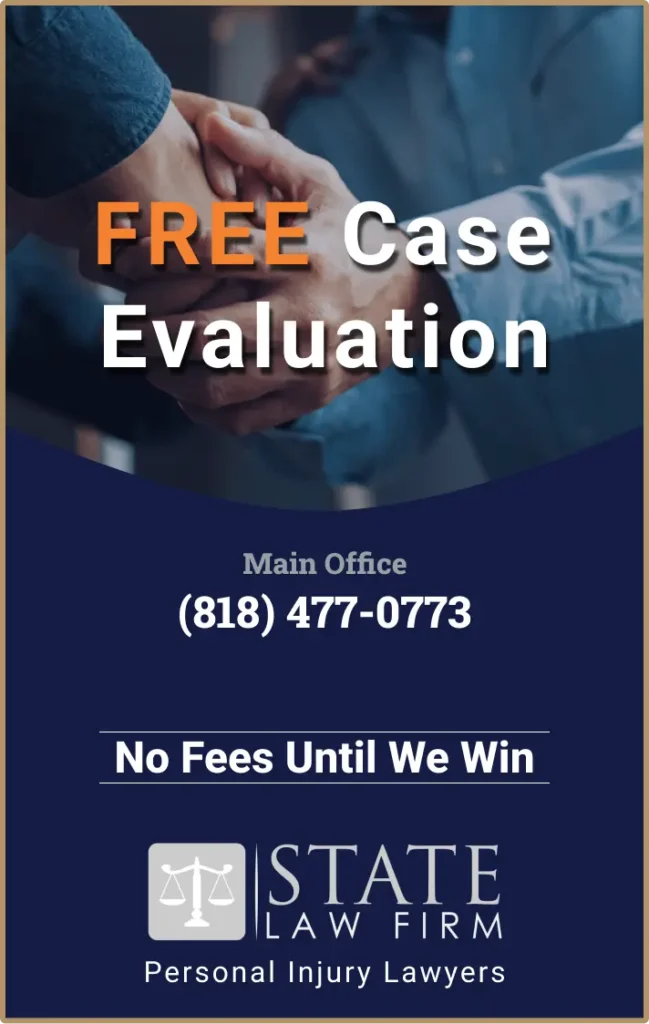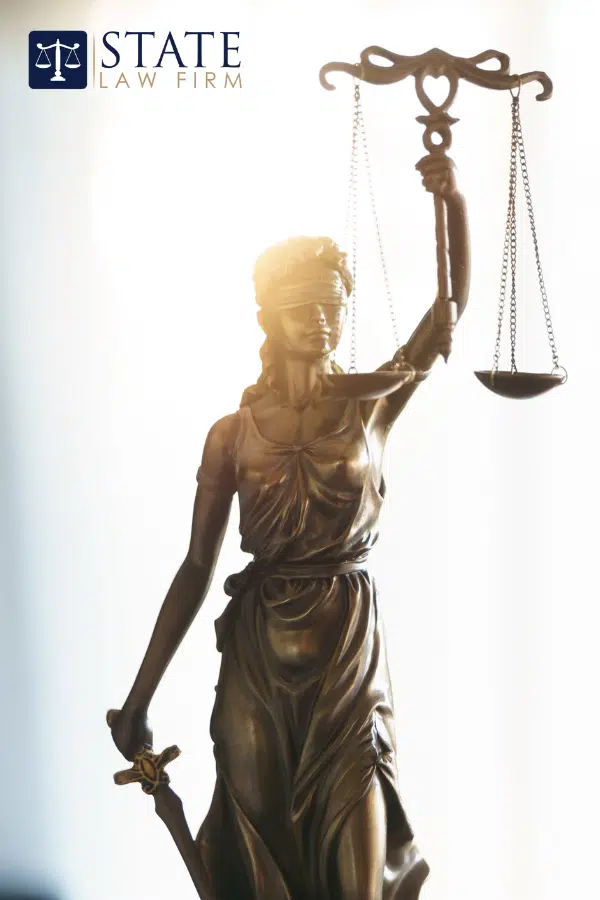An unwitnessed fall in nursing home can leave families anxious and facilities scrambling to respond. What are the immediate steps? What are the potential legal consequences? And crucially, how can such events be prevented? Our focused guide cuts through the complexity, offering clear insights into emergency protocols, legal considerations, and proactive measures to protect our elderly loved ones.
Key Takeaways
- Unwitnessed falls in nursing homes are a significant issue, with up to 75% of residents falling annually, often due to complex factors such as muscle weakness, inadequate prevention measures, and aging-related vulnerabilities.
- A comprehensive response to unwitnessed falls includes immediate medical examination, detailed documentation using tools like the TRIPS form, and thorough investigation using Root Cause Analysis (RCA) to prevent future incidents.
- Effective fall prevention in nursing homes requires a multifaceted approach, including creating personalized care plans, staff training programs, enhanced safety measures for high-risk residents, and legal recourse when negligence is involved.
Deciphering the Dilemma of Unwitnessed Falls
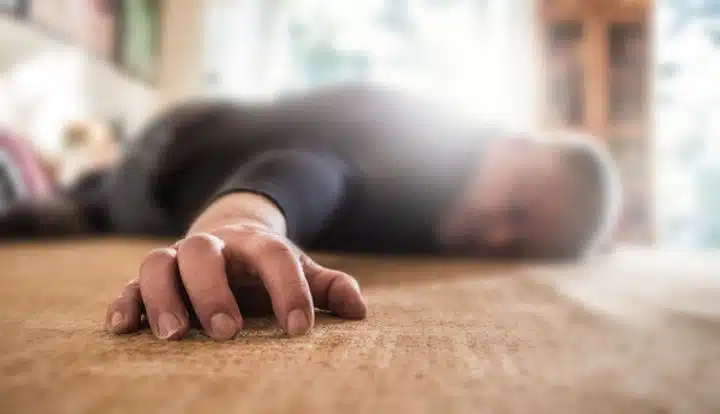
Nursing home falls are a stark reality, with up to 75% of residents experiencing a tumble each year – a rate twice that of their counterparts in community settings. The reasons behind these falls are as complex as the individuals themselves, with factors such as muscle weakness, walking difficulties, and often inadequate fall prevention measures at play. And when nursing home falls occur without a witness, the stakes rise dramatically, as these incidents can result in dire consequences, from broken bones to life-threatening injuries. The ripple effect extends beyond the individual, as an aging population and increased life expectancies thrust unwitnessed patient falls into the societal spotlight, challenging our healthcare systems to innovate and adapt.
Aging intricacies such as loss of coordination, forgetfulness, and medication side effects often amplify the risk of a loved one’s fall in a nursing home. It’s evident that while it’s impossible to prevent all falls, implementing robust fall prevention strategies is of utmost importance. Exploring the silent world of unwitnessed falls, it becomes evident that we must urgently address their frequency and reduce their impact on our elders.
The Silent Incident: Understanding Unwitnessed Falls
An unwitnessed fall is a silent incident, occurring without the watchful eyes of care professionals or cognitively able residents. It’s a challenging predicament, leaving families grappling with uncertainty and concern over the wellbeing of their loved ones. The absence of witnesses often means these falls go unreported, compounding the distress with a lack of clarity about the circumstances. Nursing home staff, faced with a puzzle devoid of direct evidence, must rely on their expertise to piece together what might have happened, rather than attributing it to the void of “unknown” causes.
Each unwitnessed fall carries a heavy burden, as it can potentially lead to injuries and, in some cases, mortality, emphasizing the high stakes. Investigations into these incidents become a quest for truth, a need to comprehend the resident’s health status and environment to forestall similar events in the future. Understanding unwitnessed falls is thus not only about addressing the immediate aftermath but also about crafting a narrative that can prevent future falls and preserve the dignity and safety of our elders.
Initial Steps Following an Unwitnessed Fall
The discovery of an unwitnessed fall sets off a race against time. Immediate medical examination is vital, and notifying nursing home management is imperative to authenticate the incident and initiate understanding and, eventually, prevention.
The path forward is clear: assess, document, and report. But what does this entail in practice? We will explore in detail the medical and procedural steps forming the foundation of a comprehensive response to these silent accidents.
Health Assessment and Medical Attention
In the aftermath of a fall, nurses are the front line, conducting a meticulous health assessment to document injuries and determine the urgency of medical attention required. This immediate evaluation is critical, encompassing a review of the resident’s systems and a keen observation for any signs of trauma. Monitoring vital signs becomes a compass guiding the next steps – from checking postural blood pressure to heart rate, these indicators can reveal underlying issues or immediate concerns. Moreover, for residents with specific health conditions like diabetes, tests such as urinalysis or glucose levels become a crucial part of the post-fall protocol, ensuring comprehensive medical attention and quality care.
The nursing home’s response to these incidents must be swift and thorough, reflecting the best practices in healthcare research and aligning with the commitment to safeguarding resident health. As medical conditions are assessed and stabilized, the focus on individual needs becomes a beacon for personalized care, ensuring that each resident’s journey back to health is supported with the full weight of medical expertise.
Documentation and Reporting Procedures
A detailed incident report is not just a formality – it’s the cornerstone of future fall prevention. Documenting an unwitnessed fall requires recording the following information:
- The environmental context, including potential obstacles and the state of equipment, to provide a clear representation of the scene for those not present at the time of the incident.
- The resident’s condition at the time of the fall.
- The response of the team and the care delivered.
- Utilizing the TRIPS form to detail the type and potential cause of the fall.
This process is underpinned by state and federal guidelines, ensuring that the facility remains accountable for the care they provide.
Following a fall, the nursing home is also obligated to:
- Keep a watchful eye on the resident for a minimum of 72 hours, documenting symptoms and treatments to ensure that no complications go unnoticed.
- This heightened level of observation is a testament to the facility’s commitment to quality care and the seriousness with which they treat every fall, reportable or not.
- The Fall Response system ensures that relevant information about the incident is communicated to all parties involved – from the primary care provider to family members – cementing the facility’s role in maintaining a transparent and responsible approach to fall management.
Investigating the Unseen: Probing Unwitnessed Falls
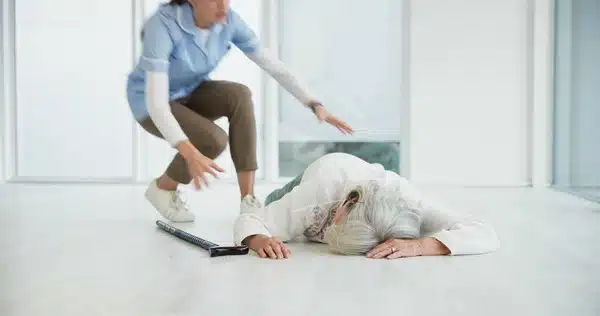
Embarking on an investigation of an unwitnessed fall is akin to assembling a complex puzzle. Root Cause Analysis (RCA) is the framework employed to dissect the event, understand its origins, and formulate measures to avert similar incidents in the future. This analytical approach goes beyond accountability, focusing on the ongoing improvement of care quality within the nursing home, treating each fall as a learning opportunity instead of a mere statistic.
How can we assemble the puzzle pieces to form a clear image of the incident? This is where the meticulous collection of evidence and the scrutinizing of environmental factors come into play.
Collecting Evidence and Witness Statements
In the absence of direct witnesses, gathering evidence becomes a detective’s work, with staff members using their intimate knowledge of residents to make educated guesses about the cause of the fall. Every fragment of information is valuable, from the resident’s condition prior to the fall to the state of the surrounding environment, all of which are documented using tools like the TRIPS form. This form serves as a comprehensive record, detailing not just the fall itself but also the activities and conditions present at the time, painting a broader picture of the incident.
This process is critical for piecing together an accurate narrative of the unwitnessed fall. It allows staff to move beyond the default “unknown” cause and instead, provide insights that could prevent future falls. The act of collecting evidence and statements is therefore not just a response to an incident; it’s an ongoing commitment to understanding and improving the care environment for all residents.
Analyzing Environmental Factors
Environmental factors play a significant role in the occurrence of falls within nursing homes, accounting for up to 27% of such incidents. Hazards such as cluttered spaces, unstable furniture, and slippery surfaces are just a few examples of the dangers that lurk in what should be a safe haven for residents. Addressing these risks requires a tailored approach, one that accounts for the unique challenges each nursing home faces, including staff turnover, facility layout, and resident behaviors.
The goal is to create an environment that minimizes these risks, promoting safety and mobility for all residents. This means not only removing immediate hazards but also considering how the design and organization of the space contribute to fall prevention.
Only through a concerted effort to understand and mitigate environmental factors can nursing homes truly protect their residents from the threat of falls.
Legal Implications of Unwitnessed Falls
When an unwitnessed fall leads to serious injury or death, the nursing home may find itself navigating a legal minefield. Under premises liability and medical negligence laws, facilities are tasked with providing comprehensive care to mitigate fall risks, and failure to do so can result in liability claims. The question of negligence hinges on whether the fall was foreseeable and preventable, which often requires expert analysis to determine the nursing home’s culpability.
Families may choose to hold a facility accountable through legal action if they believe nursing home negligence contributed to a fall, especially when severe fall injuries or wrongful death occurs. Should a lawsuit ensue, it could lead to monetary compensation for the affected families and catalyze changes within the facility to improve safety for all residents. However, it’s important to note that a nursing home can only be held liable if it failed to act on a known risk; if the fall was truly unforeseeable and unpreventable, the facility may not be at fault.
Implementing Fall Prevention Strategies
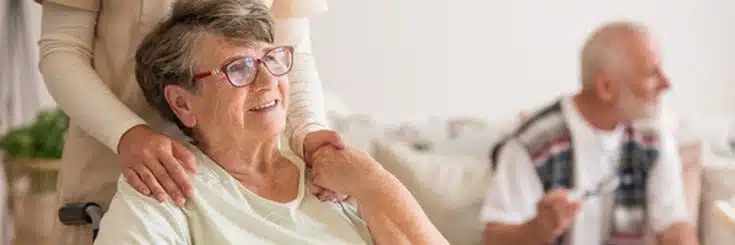
With hundreds of falls reported annually in a typical nursing home, it’s evident that an effective falls management program is not a luxury but a necessity. Fall prevention strategies are multifaceted, ranging from immediate interventions post-fall to long-term measures like scheduled monitoring and the use of bed alarms. But the cornerstone of any successful strategy is personalization and education – understanding the unique fall risk factors each resident faces and educating both staff and residents on how to address them.
We will now examine the critical components of these strategies, namely personalized care plans and staff training programs.
Personalized Care Plans
Each resident in a nursing home brings a unique set of risk factors and needs, making personalized care plans a critical aspect of fall prevention. These plans are not static documents but living, breathing roadmaps that evolve with the resident’s condition, benefiting from the input of a multidisciplinary team that may include nursing and physical therapy. In crafting these plans, the involvement of family members is invaluable, ensuring that the resident’s voice and preferences are reflected in every decision made about their care.
The effectiveness of these personalized plans hinges on clear communication and shared decision-making among staff, residents, and their families. It’s about creating a partnership that empowers residents, equipping them with the knowledge and resources to manage their fall risk actively. When implemented successfully, personalized care plans can significantly enhance the quality of care and reduce the likelihood of future falls.
Staff Training and Awareness Programs
Nursing home staff are the guardians of resident safety, and their ability to recognize and mitigate fall risks is essential. Comprehensive training programs equip staff with the knowledge to identify common risk factors, from poor balance to the side effects of prescription drugs, and implement the necessary interventions. While programs like CONNECT, which aimed to improve staff communication and problem-solving, didn’t significantly alter fall rates, they underscore the importance of cultivating strong work relationships and effective information sharing within the healthcare team.
These training and awareness programs are not one-time events but ongoing commitments to staff education and engagement. By fostering an environment where staff are well-informed and proactive in fall prevention, nursing homes can create a culture of safety that permeates every aspect of resident care.
Ultimately, it’s about building a team that is as dedicated to preventing falls as they are to responding to them, ensuring that every resident can navigate their environment with confidence.
Enhancing Safety Measures for High-Risk Residents

For residents deemed high-risk, the implementation of enhanced safety measures is critical to their well-being. These measures go beyond general fall prevention strategies, focusing on tailored interventions that address each resident’s specific vulnerabilities. Whether it’s through the use of technology, assistive devices, or increased staff monitoring, the goal is to create an environment that minimizes the chances of a fall.
Subsequently, we will discuss the crucial roles of assistive devices, technology, and frequent monitoring in ensuring the safety of these residents.
Use of Assistive Devices and Technology
Assistive devices and technology are vital tools in the arsenal against falls, offering support and stability for those at increased risk. From grab bars in bathrooms to walkers and canes that aid mobility, these devices can be life-changing. However, it’s not just about providing the equipment; it’s about ensuring that it’s used correctly and placed strategically within the environment to address specific risks. This careful consideration can mean the difference between a safe, accessible space and one that poses hidden dangers.
The debate over the use of certain assistive technologies, such as bed rails, highlights the need for ongoing research and innovation in this field. While bed rails have traditionally been used to prevent residents from rolling out of bed, they also carry risks, leading to a shift towards safer alternatives such as low beds and scooped mattresses. The continual assessment and adoption of new technologies reflect a proactive stance in fall prevention, always seeking better ways to protect residents while preserving their independence and quality of life.
Frequent Monitoring and Check-Ins
Frequent monitoring and check-ins by nursing home staff are essential to maintain a pulse on the safety of high-risk residents. This vigilant approach allows for the early identification of potential hazards and timely intervention before a fall occurs. By keeping a close eye on residents and their environments, staff can anticipate and address factors that may contribute to a fall, such as:
- a wet floor
- a misplaced piece of furniture
- poor lighting
- loose rugs or carpets
- cluttered walkways
This proactive approach can help prevent falls and ensure the safety of residents, addressing the issue of resident falls.
Moreover, regular check-ins foster a sense of security among residents, knowing that help is never far away. This safety net can alleviate the fear of falling that many residents experience, a psychological hurdle that can lead to inactivity and further decline. Thus, frequent monitoring not only prevents physical harm but also supports the mental well-being of residents, enabling them to engage more fully in the social and physical activities that enrich their lives.
Navigating Legal Options After a Fall
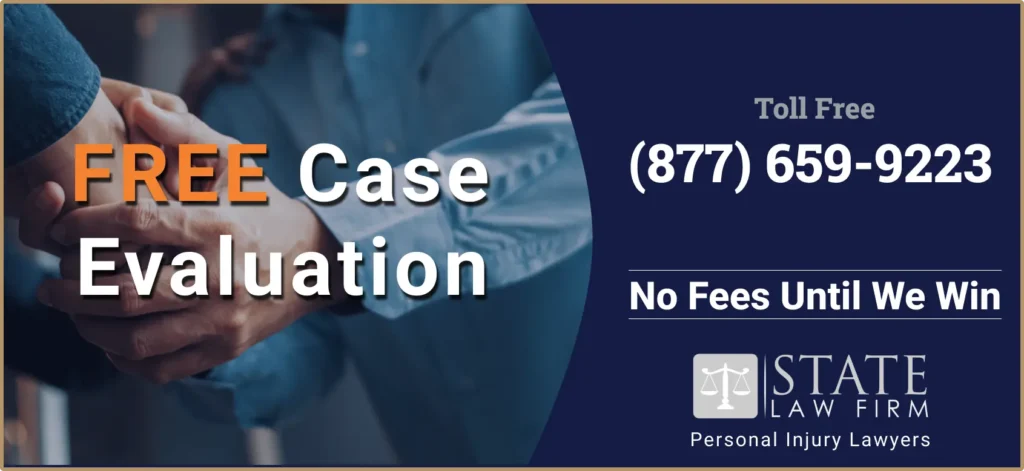
In the wake of a nursing home fall, families may find themselves at a crossroads, weighing the need for legal recourse against the emotional toll of such proceedings. Specialized nursing home fall attorneys, including nursing home abuse lawyers, can provide invaluable guidance, offering a free consultation to assess the merits of a case and discuss the legal options available. These legal professionals are adept at navigating the complex landscape of state and federal laws, ensuring that the rights of the injured are upheld and that facilities are held to the highest standards of care.
Legal action against a negligent nursing home is not just about seeking compensation; it’s about justice and accountability. Settlements can range significantly, reflecting the severity of the injury and the impact on the resident’s quality of life. More importantly, these cases can drive systemic changes within the facility, leading to improved practices and safer environments for all residents, ensuring nursing homes are held liable for their actions or omissions.
Empowering Families: Preventing Future Falls
Empowering families is a critical step in the fight to prevent future falls. Armed with knowledge and a collaborative spirit, family members can become powerful advocates for the safety and well-being of their loved ones in nursing homes. By proactively engaging with staff and management, families can ensure that fall prevention strategies are not only in place but effectively implemented.
Maintaining open communication is vital. In the following sections, we will examine how dialogue with nursing home staff and seeking external support can strengthen these prevention efforts.
Communication with Nursing Home Staff
Open and regular communication with nursing home staff is a linchpin in safeguarding residents against falls. Families that maintain a dialogue with caregivers and medical professionals are better positioned to understand the risks their loved ones face and to advocate for necessary preventive measures. This communication can take many forms, from discussing changes in a resident’s mobility to reviewing the effectiveness of fall prevention strategies already in place.
Moreover, these conversations can help families stay informed about the resident’s overall health and any adjustments in care plans that may be warranted. By being involved and asking the right questions, families can play an active role in the fall prevention process, ensuring that their loved ones receive the best possible care and attention tailored to their needs.
Seeking External Support and Resources
While families and nursing home staff work together to prevent falls, external support and resources can also play an invaluable role. Ombudsman programs, for instance, offer advocacy and assistance, providing a voice for residents and their families in addressing concerns related to nursing home care. These programs can help mediate disputes and ensure that residents receive the quality care they deserve, stepping in when issues arise that require outside intervention.
Additionally, community social services, support groups, and educational workshops can empower families with the knowledge and skills necessary to navigate the complexities of nursing home care. These resources provide a support network for families, offering guidance and reassurance as they work to ensure the safety and well-being of their loved ones. By leveraging these external supports, families can bolster their efforts to prevent falls and enhance the quality of life for nursing home residents.
Summary
As we reach the end of our exploration into the multifaceted issue of unwitnessed falls in nursing homes, the central tenets are clear. Vigilance, communication, and a commitment to personalized care form the bedrock of effective fall prevention. From the initial medical assessment following a fall to the intricate legal considerations that may arise, each step reflects a dedication to the safety and dignity of nursing home residents. By understanding the challenges and deploying targeted strategies, we can reduce the incidence of falls and ensure that our elderly population is afforded the protection and respect they deserve.
The journey through the silent corridors of nursing homes, where unwitnessed falls occur, need not be one shrouded in fear. Armed with the insights and strategies discussed in this blog post, families, caregivers, and nursing home staff can work in concert to create environments where residents are not only safe from falls but also empowered to live their lives to the fullest. Let this be a call to action—a beacon that guides us toward a future where every elder has the support and care they need to stand strong against the risk of falls.
Frequently Asked Questions
What to do when a resident falls in a nursing home?
If a resident falls in a nursing home, one should report the incident to the staff and inquire about the circumstances and response. Make sure to follow up on the resident’s evaluation and care.
What is the most common abuse in nursing homes?
The most common abuse in nursing homes is emotional abuse, which involves insults, threats, and control over the residents. According to the WHO, over 32% of nursing home staff members admitted to emotionally abusing residents.
Which action is indicated if a patient has an unwitnessed fall?
If a patient has an unwitnessed fall, the indicated action is to assess circulation, airway, and breathing according to your hospital’s protocol, call for assistance, and activate the appropriate emergency response team if required. Do not move the patient until they have been assessed for safety to be moved.
How do nursing homes investigate unwitnessed falls?
Nursing homes investigate unwitnessed falls using Root Cause Analysis (RCA) to understand contributing factors and develop prevention strategies, which involves collecting evidence, witness statements, and analyzing environmental factors.
What legal recourse do families have if a loved one experiences a fall in a nursing home?
Families can seek legal recourse by consulting with nursing home fall attorneys to pursue negligence lawsuits, seeking compensation for injuries and driving changes in the facility to prevent future falls.

